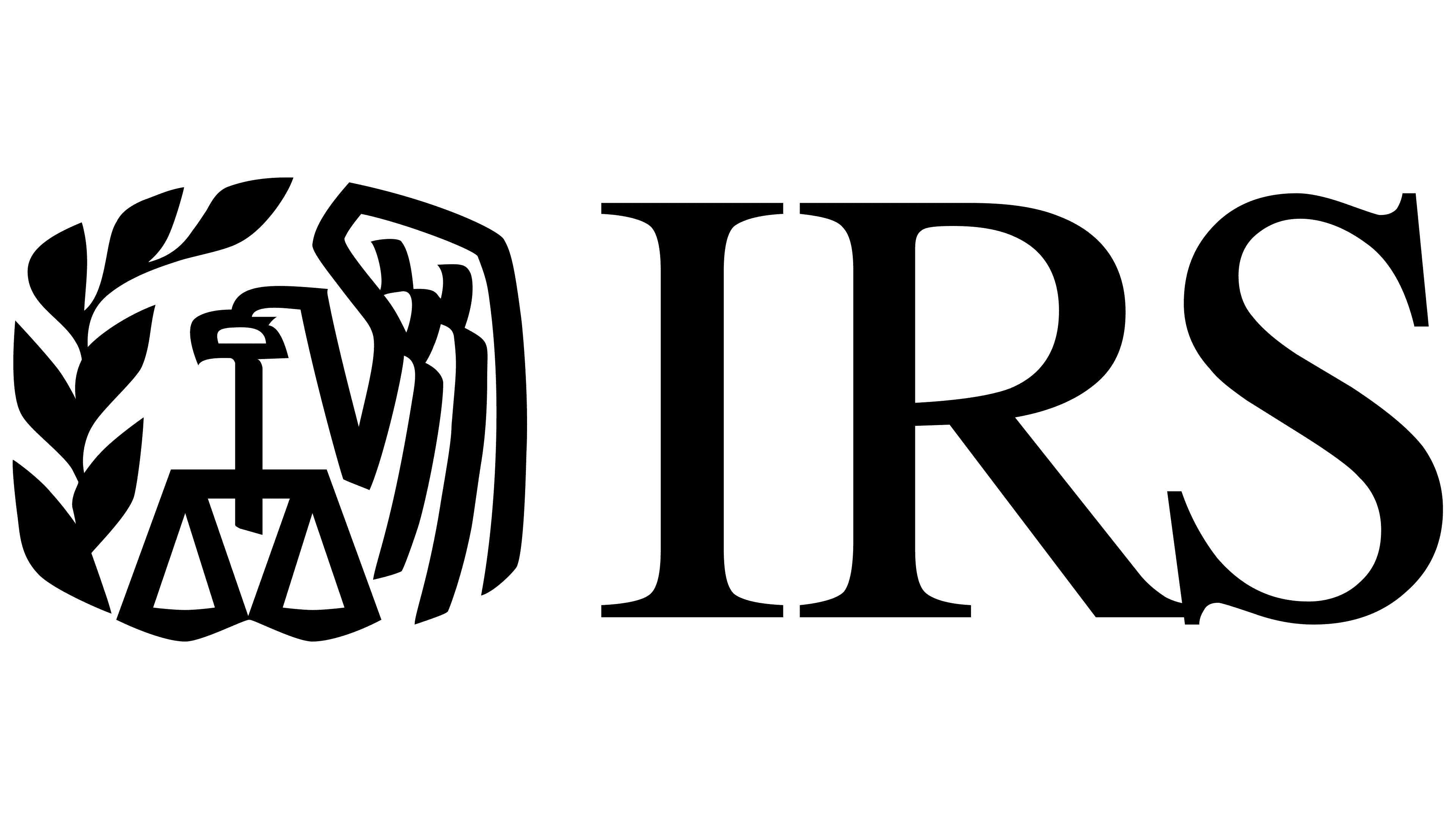






5-Star Service, Trusted & Loved by Hundreds
Your Appraiser Search Ends Here
Your Appraiser Search Ends Here
.avif)

Nationwide Coverage – Appraisals Anywhere in the US

Get it done Onsite or Online

Any Asset, Covered

Defensible for Any Purpose
Frequently Asked
Questions
No Frequently Asked Questions Found.
Key examples of personal use assets include primary residences, vacation homes, art collections, antiques, classic cars, boats, and other items acquired primarily for personal pleasure. Unlike business assets, these possessions are not primarily designed to generate income or serve commercial objectives.
The classification of personal use carries significant implications for financial and legal considerations. Tax regulations, insurance requirements, and estate planning all rely on understanding the nuanced distinctions between personal and commercial asset usage. For instance, expenses related to personal-use assets typically differ from business-related expenditures in terms of tax deductibility and reporting requirements.
Personal use assets often transcend mere monetary value, embodying emotional significance and personal history. Family heirlooms, inherited collectibles, and cherished personal properties frequently represent more than their financial worth, carrying sentimental attachments and personal memories that cannot be easily quantified.
Understanding the specific nature of personal use assets helps individuals make informed decisions about valuation, protection, and potential future disposition. Whether considering insurance coverage, estate planning, or financial strategy, recognizing the unique characteristics of personal use assets provides a comprehensive approach to asset management and preservation.
Insurance protection stands as a primary motivation for obtaining an appraisal. By documenting the precise value of your valuables, you ensure comprehensive coverage that accurately reflects replacement costs. This prevents potential financial shortfalls during unexpected loss or damage scenarios.
Estate planning represents another key area where personal property appraisals prove invaluable. Professional valuations facilitate equitable asset distribution among beneficiaries and provide clear documentation for potential tax considerations. This approach minimizes potential family disputes and creates transparency in inheritance processes.
When considering selling or liquidating assets, an accurate appraisal becomes an essential tool. Professional valuation provides a credible foundation for pricing strategies, enhancing your negotiating position and providing potential buyers with confidence in the asset's worth. This is particularly crucial for unique or specialized items with complex market dynamics.
Certain tax scenarios also necessitate professional appraisals, especially for charitable donations or complex asset transfers. These documented valuations ensure regulatory compliance and can potentially optimize tax strategies by providing officially recognized asset assessments.
Beyond financial considerations, personal property appraisals offer intrinsic value through enhanced understanding of your assets. They provide deeper appreciation for the historical, cultural, or personal significance of your possessions while delivering objective, professional insights into their current market standing.
Ultimately, a professional appraisal transcends simple monetary evaluation, offering a comprehensive approach to understanding and protecting your personal property's value across multiple life contexts.
An antique silver appraisal represents a specialized professional assessment that meticulously evaluates silver objects crafted over a century ago. This comprehensive evaluation goes far beyond a simple price estimation, encompassing a nuanced exploration of historical significance, craftsmanship, and current market dynamics.
The process involves a detailed forensic examination of the silver piece, where expert appraisers leverage deep knowledge to uncover intricate details about the item's provenance. Specialized techniques are employed to authenticate the piece's origin, including careful analysis of hallmarks, maker's stamps, and distinctive design elements that provide critical insights into its historical context.
Condition plays a pivotal role in determining value. Professional appraisers conduct meticulous inspections, examining every surface for signs of wear, potential restoration attempts, and structural integrity. They assess subtle nuances like patina development, manufacturing techniques, and preservation quality that can dramatically influence the item's market worth.
Market research forms another crucial component of the appraisal process. Appraisers conduct extensive comparative analyses, tracking recent auction results, collector trends, and current market demands to establish a precise and current valuation. This approach ensures that the assessment reflects not just the silver's intrinsic material value, but its broader collectible significance.
The ultimate goal of an antique silver appraisal extends beyond a simple monetary figure. It provides owners with comprehensive documentation that serves multiple purposes, from insurance documentation to estate planning, offering a definitive understanding of the item's historical and financial importance.
Online antique silver appraisals have become increasingly sophisticated, offering clients a convenient and professional alternative to traditional in-person evaluations. Skilled appraisers can now accurately assess silver antiques through detailed photographic documentation and comprehensive item descriptions submitted electronically.
The virtual appraisal process typically involves clients providing high-resolution images from multiple angles, along with critical details about the item's provenance, markings, condition, and historical context. Advanced video conferencing platforms like Zoom or Skype enable real-time interactions, allowing appraisers to conduct interactive examinations and answer client questions immediately.
Professional online appraisals adhere to the Uniform Standards of Professional Appraisal Practice (USPAP), ensuring rigorous methodology and credible valuation regardless of assessment format. This approach eliminates geographical constraints, providing flexibility for clients located anywhere and streamlining the entire valuation experience.
While online appraisals offer remarkable convenience, they are most effective when clients provide extensive, clear documentation. Precise photographs, accurate measurements, and comprehensive background information are crucial for delivering an accurate assessment of an antique silver item's condition, authenticity, and market value.
Clients should understand that some complex or rare pieces might still require in-person examination to determine a definitive valuation. However, for many antique silver items, online appraisals represent an efficient, professional, and accessible method of understanding an item's worth.
Antique silver appraisers represent a nuanced professional landscape with distinct specialties and expertise. These professionals can be categorized based on their professional focus, depth of knowledge, and service delivery methods. Understanding these variations helps collectors and owners select the most appropriate expert for their specific silver valuation needs.
General appraisers offer broad knowledge across multiple antique categories, capable of evaluating various silver items with a comprehensive but less specialized approach. Their versatility allows them to assess diverse silver pieces, though they may lack granular insights into rare or complex items.
Specialty appraisers represent a more focused category, concentrating on specific historical periods, cultural origins, or design styles. These experts possess deep, targeted knowledge about particular silver manufacturing eras, makers, or regional craftsmanship. Their expertise enables precise authenticity assessments and nuanced market value determinations.
Certified appraisers bring professional credentials from recognized institutions, demonstrating rigorous training and adherence to established ethical standards. Their qualifications make them particularly valuable for formal documentation requirements like insurance evaluations or estate planning.
Auction house appraisers leverage extensive market experience, providing real-time insights into current silver valuation trends. Their proximity to active market dynamics allows them to offer sophisticated pricing assessments based on contemporary collector interests and market demands.
Independent appraisers operate autonomously, offering customized services with flexible engagement models. Their professional independence allows for personalized approaches tailored to unique client requirements and specialized silver item assessments.
Online appraisers represent an emerging category, utilizing digital platforms to conduct remote evaluations. Through advanced photographic documentation and detailed item descriptions, these professionals provide convenient assessment options for clients unable to engage in traditional in-person consultations.
Each appraiser type contributes unique perspectives to silver valuation, enabling owners to find precisely matched expertise for their specific needs.
Antique silver items are more than mere decorative pieces; they are repositories of history, craftsmanship, and potential financial value. An expert appraisal offers comprehensive insights that extend far beyond a simple price tag.
Insurance protection represents a critical motivation for professional assessment. A detailed appraisal ensures accurate coverage, preventing potential financial gaps in the event of loss, damage, or theft. Insurance providers rely on professional documentation to establish appropriate compensation levels.
Estate planning demands precise valuation of inherited silver pieces. A professional appraisal provides clear, objective documentation that can streamline inheritance processes, minimize potential family disputes, and establish a transparent framework for asset distribution.
Tax considerations make appraisals particularly valuable for those considering charitable donations. When donating antique silver items exceeding $5,000, a qualified professional appraisal becomes essential for substantiating value and maximizing potential tax deductions.
For collectors and sellers, an appraisal delivers a realistic market assessment. This knowledge empowers informed decision-making, whether preparing to sell at auction, negotiate with potential buyers, or understand the current market positioning of a specific piece.
Beyond monetary considerations, an appraisal unveils the historical narrative embedded within each silver item. Professional assessment reveals intricate details about craftsmanship, origin, and cultural significance, transforming an object from a mere possession to a meaningful artifact with its own unique story.
Understanding the multifaceted value of antique silver through professional appraisal enables owners to make informed, strategic decisions about preservation, insurance, potential sale, and long-term asset management.
Understanding Antique Silver: A Brief Overview
Antique silver refers to items made from silver that are at least 100 years old, often exhibiting unique craftsmanship and historical significance. Common types of antique silver include cutlery, jewelry, and decorative pieces, which are frequently sought after by collectors and enthusiasts alike. The value of antique silver is influenced by various factors such as age, maker, design, and condition, making it essential for potential buyers and sellers to understand these elements before proceeding with any transactions.
One of the key aspects of assessing antique silver is recognizing the hallmark or signature, which provides information about the producer and often indicates the item’s origin and authenticity. Hallmarks can also give insight into the item's construction method, such as whether it is sterling or plated. Knowledge of notable makers, such as Tiffany & Co. or Georg Jensen, can also significantly affect the valuation and desirability of the piece, as certain brands may command higher prices due to their historical prestige.
When considering the purchase or sale of antique silver, it is crucial to conduct a thorough appraisal. This process not only identifies the item's worth but also ensures that its authenticity and condition are accurately assessed. Since the market for antique silver can fluctuate based on trends and demand, professional insights can help guide decision-making, ensuring that both buyers and sellers are equipped with the knowledge they need to navigate this fascinating market.
The Importance of Antique Silver Appraisal
Antique silver appraisal is essential for anyone looking to buy or sell pieces from this exquisite genre of collectible items. Understanding the true value of antique silver involves considering factors such as age, craftsmanship, historical significance, and weight. A professional appraisal provides insight into these aspects, ensuring that buyers are making informed purchases while sellers can set realistic expectations for their assets.
An accurate appraisal is not only beneficial for determining market value but also plays a crucial role in insurance considerations. Antique silver can appreciate or depreciate over time based on market trends, which means regular appraisals are vital for maintaining appropriate insurance coverage. This process also helps owners safeguard their investments and facilitates informed decision-making regarding selling or curating their collections.
Moreover, antique silver holds cultural and historical significance that adds complexity to its valuation. Pieces can have unique stories and provenance, which can greatly influence their desirability and worth. By engaging an expert in antique silver appraisal, individuals can gain a deeper appreciation of their items, understand their place within the market, and make educated choices whether they are buying, selling, or preserving heirlooms.
Key Factors Affecting Antique Silver Value
The value of antique silver is influenced by several critical factors, including its age, condition, and provenance. Age is often the first indicator of potential value; items produced in the 18th or 19th centuries are generally more sought after than those made later. Additionally, the condition of the piece plays a significant role; well-maintained items with minimal wear or damage typically command higher prices. Provenance, or the documented history of ownership, can also enhance value, especially if the item can be traced back to a notable owner or period.
Another essential factor to consider is the maker's mark, which indicates the silversmith or manufacturer responsible for creating the piece. Renowned makers such as Tiffany & Co. or Georg Jensen often lead to increased desirability and value due to their established reputations and the quality of craftsmanship associated with their products. Furthermore, the design and craftsmanship of an item significantly impact its appeal; intricate designs and unique features often attract serious collectors and buyers alike, further driving up value.
Market demand and current trends also play a vital role in determining antique silver's worth. Specific styles or periods may see spikes in popularity, influencing prices and desirability. For instance, Art Deco pieces may garner more attention during certain economic climates or cultural trends, while the popularity of minimalist designs may diminish interest in more ornate items. Understanding these fluctuating market dynamics is crucial for both buyers and sellers to navigate the complexities of antique silver valuations effectively.
Types of Antique Silver Items Commonly Appraised
When it comes to antique silver appraisals, a variety of items are commonly evaluated. These can range from flatware sets, including forks, spoons, and knives, to larger pieces such as trays and serving vessels. Collector items such as silver tea sets, candle holders, and bowls are also frequently appraised, as they often showcase exquisite craftsmanship and historical significance that can enhance their value.
Another category includes decorative items, where the artistry of silver chasing or engraving can significantly affect the appraisal outcome. Popular examples are silver ornaments, picture frames, and jewelry, which may feature intricate designs or gemstones that elevate their worth. Additionally, silver coins and ingots are also appraised by specialists, particularly for collectors looking to understand the value of their investments based on market demand and condition.
The age and provenance of these items play a crucial role in the appraisal process. Antique silver, typically defined as pieces that are over 100 years old, often holds greater value due to its rarity and historical context. Evaluators may also consider the manufacturer's mark, style trends from specific periods, and any documentation or family history associated with the items to provide a comprehensive assessment.
The Appraisal Process Explained
The appraisal process for antique silver typically begins with a thorough examination of the piece by a qualified appraiser. Appraisers consider various factors, including the maker's mark, age, design, and overall condition, which collectively contribute to determining the item's value. They often refer to historical records and market trends, ensuring that their evaluation reflects both the historical significance and current demand for similar items in the marketplace.
Once the appraiser has completed the examination, they will compile a detailed report that outlines their findings. This report usually includes high-quality photographs, descriptions of the item, and a comprehensive valuation that reflects both retail and auction values. This document not only serves as proof of the item’s worth but can also be invaluable for insurance purposes or estate planning.
In some cases, clients may seek appraisals for specific intentions, such as sale or purchase decisions. Understanding the nuances of the antique silver market can significantly affect outcomes during negotiations. A well-prepared appraisal report provides a sound basis for these transactions, allowing buyers to make informed offers and sellers to price their items realistically, minimizing the risk of potential disputes.
How to Prepare for an Antique Silver Appraisal
Preparing for an antique silver appraisal involves several steps to ensure you get the most accurate valuation. Start by assembling any documentation that pertains to the piece, such as receipts, provenance, or certificates of authenticity. This paperwork can provide vital context for the appraiser, contributing to a more informed assessment. Additionally, cleaning the item lightly can enhance its presentation, but avoid harsh chemicals or aggressive cleaning methods that might affect its integrity.
Next, it's essential to familiarize yourself with the specific characteristics and attributes of your antique silver item. Understanding its maker, age, and any markings can be valuable information during the appraisal. Conducting preliminary research on similar pieces may also provide insight into potential market value trends. By being well-prepared and gathered with relevant information, you create an environment conducive to a comprehensive and effective appraisal process.
Common Misconceptions About Antique Silver
One commonly held misconception about antique silver is that all pieces should have a high monetary value simply due to their age. While age can contribute to the value, it is not the sole determinant. Factors such as the maker’s mark, historical context, rarity, and condition play significant roles in assessing the worth of antique silver. Thus, individuals looking to buy or sell should not assume that any old silver item will automatically command a premium price.
Another prevalent myth is the belief that all antique silver is made from pure silver. In reality, many antique silver items are made from silver-plated materials or alloys, which can significantly impact their value. Understanding the composition of an item is crucial for collectors and sellers alike, as purity levels will affect pricing and desirability. Buyers should educate themselves on the different types of silver and the methods used in crafting antique pieces to make informed decisions.
Lastly, there is a misconception that condition and craftsmanship do not greatly affect the appraisal process for antique silver. While individuals may think that minor scratches or dents are inconsequential, professional appraisers consider these imperfections when determining value. High-quality craftsmanship can enhance an item's worth, while extensive damage can substantially lower it. Understanding this nuance is essential for those involved in the purchase and sale of antique silver, as it underscores the importance of thorough evaluation by experts.
Finding Qualified Appraisers for Antique Silver
When seeking qualified appraisers for antique silver, it is essential to look for professionals who possess specialized knowledge in the field of silver antiques. These appraisers should ideally have certifications from recognized appraisal organizations and significant experience in assessing antique silver pieces. A strong background in history, craftsmanship, and market trends related to silverware can greatly enhance the accuracy of the appraisal process.
Local antique shops, auction houses, and online appraisal directories can serve as valuable resources for finding qualified appraisers. Many experienced appraisers are associated with professional organizations that uphold ethical standards and provide ongoing education to their members. Checking references and reviewing past appraisal reports can also offer insights into the appraiser's expertise and reliability.
In addition to credentials, communication skills play a vital role in the appraiser's ability to convey the details of their findings. A qualified appraiser should not only provide a thorough evaluation but also explain the reasoning behind their conclusions, including the methodologies used and current market conditions affecting the value. This transparency can help both buyers and sellers make informed decisions regarding the acquisition or disposal of antique silver items.
The Role of Market Trends in Antique Silver Value
Market trends play a pivotal role in determining the value of antique silver items, influencing both buyers and sellers alike. Like any collectible, the worth of antique silver fluctuates based on supply and demand, the tastes of collectors, and broader economic conditions. When market interest in a particular style or period rises, the values of items associated with that trend often increase, making it essential for potential sellers and buyers to stay informed about current and emerging trends.
Additionally, fluctuations in the economy can impact the antique silver market significantly. During periods of economic stability or growth, collectors may feel more confident investing in high-value items, driving up demand and prices. Conversely, during economic downturns, the market may see a decrease in interest, causing prices to stagnate or even decline. Understanding these dynamics can help collectors make informed decisions regarding their purchases and sales, ensuring they achieve the best possible outcome.
Moreover, the provenance of antique silver also interacts with market trends, heightening its value based on origin and history. Unique pieces tied to significant events, designers, or regions can see an increase in desirability as certain styles or periods come back into vogue. As these trends shift, appraisers must consider not only the age and condition of the silver but also its relevance in the current market landscape to provide accurate evaluations for buyers and sellers.
Documenting Appraisal Results: Importance and Best Practices
Documenting appraisal results for antique silver is critical for both buyers and sellers. This process not only establishes the item’s value but also provides essential information regarding its history, condition, and authenticity. A well-prepared appraisal report serves as a concrete record that can be referenced in future transactions, insurance claims, or estate planning. It ensures that all parties are clear on product details, preventing potential disputes down the line.
Best practices for documenting appraisal results begin with including comprehensive details about the antique silver piece. This includes information such as maker’s marks, assay marks, and any notable features that contribute to its value. Clear, high-resolution photographs should accompany the written report to visually support claims and descriptions. Including comparable sales data and market trends can also enhance the appraisal by providing context to the valuation.
Furthermore, it is vital to ensure that the appraisal document is signed and dated by the qualified appraiser, affirming its legitimacy. This signature indicates that the appraiser has conducted a thorough examination of the piece, adhering to industry standards and ethics. Such documentation not only bolsters trust among parties involved but also enhances the item's credibility when presented in marketplaces or auctions, ultimately leading to a smoother transaction process.
What to Do After the Appraisal: Selling or Holding?
After receiving an appraisal for your antique silver, the next step depends on your personal goals and circumstances. If you are considering selling, it is essential to research potential buyers and market trends to garner the best price for your item. Alternatives include auction houses, online platforms, and antique dealers, each providing different benefits and exposure. Understanding the appraisal value can help you set a competitive selling price while also considering transaction fees and commissions that may apply.
On the other hand, if you choose to hold onto your antique silver, it’s important to maintain its condition to preserve its value over time. Proper storage and care can significantly affect the item's longevity, making it a worthwhile investment for the future. Additionally, keeping detailed records of the appraisal and any provenance associated with the piece will add value should you decide to sell it later. Ultimately, the decision to sell or hold should align with your financial goals and passion for collecting antique silver.
Conclusion: Making Informed Decisions with Appraisal Insights
In the world of antique silver, understanding the intricacies of appraisals can significantly enhance the purchasing or selling experience. A well-conducted appraisal not only establishes the current market value of the silver piece but also sheds light on its historical context, maker, and rarity. This information is invaluable for both buyers aiming to invest wisely and sellers looking to receive a fair price. Gaining insights into these factors ensures that all parties involved can make informed decisions rooted in reliable data.
Ultimately, engaging with qualified appraisal professionals provides a clear advantage when navigating the antique silver market. Their expertise can help decipher subtleties that might go unnoticed by the untrained eye, ensuring that both buyers and sellers are aware of the true worth of their items. By leveraging thorough appraisal insights, individuals can foster a more transparent transaction process, leading to greater satisfaction and confidence in their investments. In a marketplace where authenticity and value are paramount, knowledgeable decisions pave the way for successful engagements.
View all Locations
BEST-IN-CLASS APPRAISERS, CREDENTIALED BY:






.svg)









